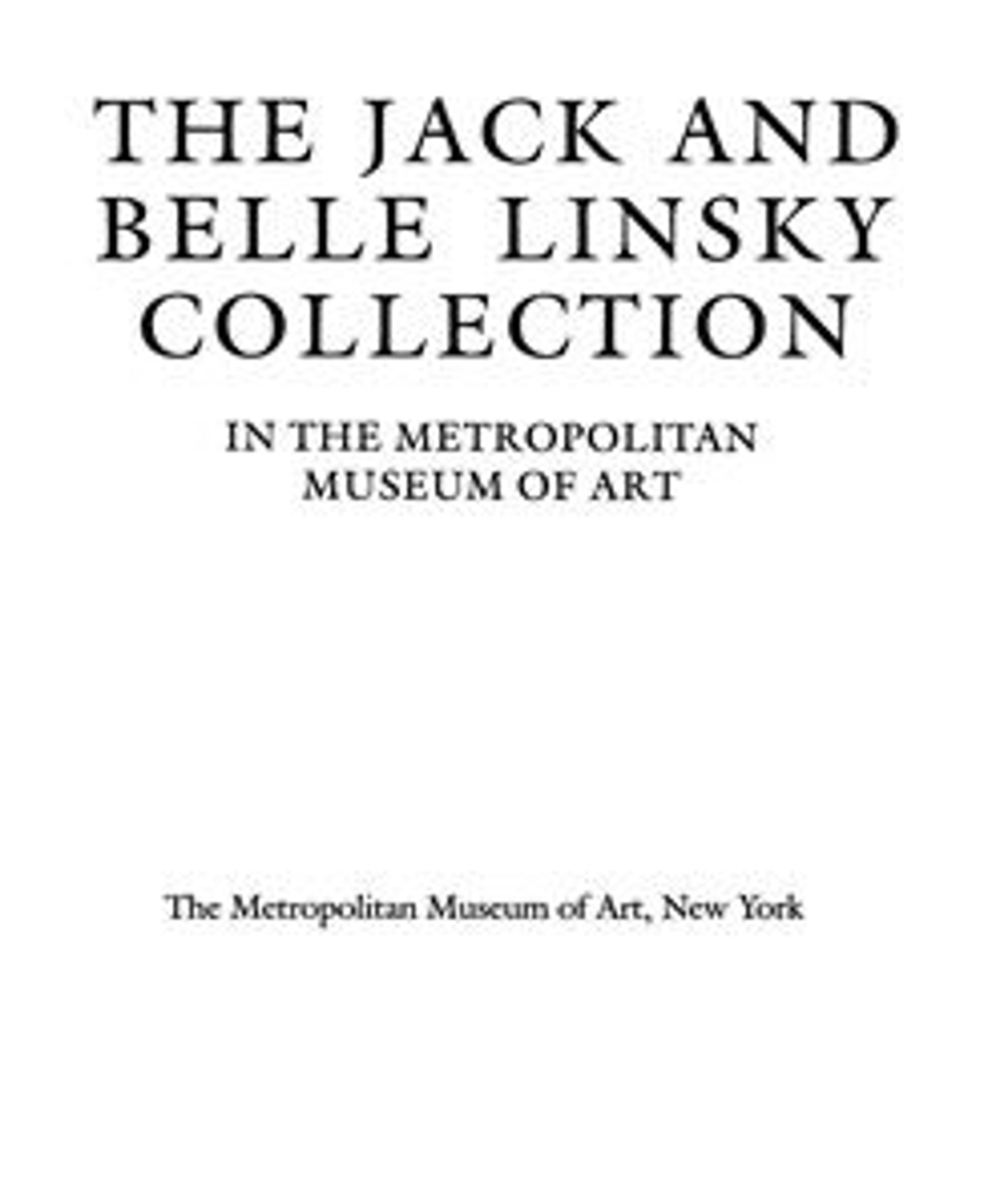Wall barometer-thermometer
The dial of the thermometer is signed by the barometer maker Lange de Bourbon, about whom little is known. He signed other barometers of the period, including one of about 1770 in the Metropolitan Museum, where the dial reads: LANGE DE BOURBON, FAISEUR DE BAROMETRE DU ROY.[1]
The thermometer is on the Réaumer scale (where water freezes at 0° and boils at 80°), which prevailed in France in the second half of the eighteenth century. The dates on the dial record several extremes of temperature in Paris, from a high of 32° Re in 1753 to a low of -15° Re in 1709. Three other cities are included for their low temperatures: Astrakhan, "Petersbour" (modern day Saint Petersburg), and "Kebec" (Quebec), which reached -33 Re in 1743. The latest date on the dial is 1754. Among other such inscriptions are "Ch[aleur] d'un Malade" and "Ch[aleur] de Versoies" (indicating the temperature at which silkworms were raised). The barometer records the standard range of weather indications.
A number of wall barometer-thermometers or clock-thermometers of this design are known, with movements by various makers or unsigned. With small variations these objects are all mounted identically, and the group as a whole shows that this model was available in Paris in the 1760s and could be adapted to suit the individual clock- or barometer-maker. These works are (1) barometer-thermometer, private collection, Paris, the case stamped by the ébéniste Joseph de Saint-Germain (maître 1750);[2] (2) barometer-thermometer, Drottningholm, Stockholm;[3] (3) barometer-thermometer, formerly in the collection of Ernest Rechnitzer;[4] (4) clock-thermometer with movement by Jean-André Lepautre (1720–1787) and matching barometer-thermometer, both formerly in the collection of the comte Greffulhe; [5] clock-thermometer, the clock signed "Giles Lainé à Paris" (active about 1760–90), the thermometer signed "par Ronquetti Rue St. Antoine," Huntington Art Gallery, San Marino;[6] (6) barometer-thermometer and clock, the barometer and clock signed by David Frédéric Dubois, Victoria and Albert Museum, London; and (7) barometer-thermometer and clock, the barometer and clock signed by Ferdninand Berthoud (1727–1807), Alexander & Berendt Ltd., London, 1983.
[Bill Rieder, 1984]
Footnotes:
[1] C. C. Dauterman, J. Parker, and E. A. Standen, Decorative Art from the Samuel H. Kress Collection at the Metropolitan Museum of Art, London, 1964, no. 66, fig. 230.
[2] A. Gonzalez-Palacios, "Le vendite Demidoff e Ruspoli Talleyrand," Arte Illustrata no. 17–18 (1969), p. 125, fig. 18.
[3] J. Böttiger, Fran de Kungliga Slotten, Stockholm, 1925, fig. 64.
[4] Sale, Christie's, London, May 19, 1955, lot 46.
[5] Sale, Sotheby's, London, July 23, 1937, lot 45.
[6] R. Wark, French Decorative Art in the Huntington Collection, San Marino, 1979, p. 64, fig. 86.
The thermometer is on the Réaumer scale (where water freezes at 0° and boils at 80°), which prevailed in France in the second half of the eighteenth century. The dates on the dial record several extremes of temperature in Paris, from a high of 32° Re in 1753 to a low of -15° Re in 1709. Three other cities are included for their low temperatures: Astrakhan, "Petersbour" (modern day Saint Petersburg), and "Kebec" (Quebec), which reached -33 Re in 1743. The latest date on the dial is 1754. Among other such inscriptions are "Ch[aleur] d'un Malade" and "Ch[aleur] de Versoies" (indicating the temperature at which silkworms were raised). The barometer records the standard range of weather indications.
A number of wall barometer-thermometers or clock-thermometers of this design are known, with movements by various makers or unsigned. With small variations these objects are all mounted identically, and the group as a whole shows that this model was available in Paris in the 1760s and could be adapted to suit the individual clock- or barometer-maker. These works are (1) barometer-thermometer, private collection, Paris, the case stamped by the ébéniste Joseph de Saint-Germain (maître 1750);[2] (2) barometer-thermometer, Drottningholm, Stockholm;[3] (3) barometer-thermometer, formerly in the collection of Ernest Rechnitzer;[4] (4) clock-thermometer with movement by Jean-André Lepautre (1720–1787) and matching barometer-thermometer, both formerly in the collection of the comte Greffulhe; [5] clock-thermometer, the clock signed "Giles Lainé à Paris" (active about 1760–90), the thermometer signed "par Ronquetti Rue St. Antoine," Huntington Art Gallery, San Marino;[6] (6) barometer-thermometer and clock, the barometer and clock signed by David Frédéric Dubois, Victoria and Albert Museum, London; and (7) barometer-thermometer and clock, the barometer and clock signed by Ferdninand Berthoud (1727–1807), Alexander & Berendt Ltd., London, 1983.
[Bill Rieder, 1984]
Footnotes:
[1] C. C. Dauterman, J. Parker, and E. A. Standen, Decorative Art from the Samuel H. Kress Collection at the Metropolitan Museum of Art, London, 1964, no. 66, fig. 230.
[2] A. Gonzalez-Palacios, "Le vendite Demidoff e Ruspoli Talleyrand," Arte Illustrata no. 17–18 (1969), p. 125, fig. 18.
[3] J. Böttiger, Fran de Kungliga Slotten, Stockholm, 1925, fig. 64.
[4] Sale, Christie's, London, May 19, 1955, lot 46.
[5] Sale, Sotheby's, London, July 23, 1937, lot 45.
[6] R. Wark, French Decorative Art in the Huntington Collection, San Marino, 1979, p. 64, fig. 86.
Artwork Details
- Title:Wall barometer-thermometer
- Maker:Clockmaker: Lange de Bourbon (French, active 1750–75)
- Date:ca. 1760
- Culture:French
- Medium:Oak veneered with rosewood, gilt-bronze mounts
- Dimensions:Height: 45 3/4 in. (116.2 cm)
- Classification:Horology
- Credit Line:The Jack and Belle Linsky Collection, 1982
- Object Number:1982.60.52
- Curatorial Department: European Sculpture and Decorative Arts
More Artwork
Research Resources
The Met provides unparalleled resources for research and welcomes an international community of students and scholars. The Met's Open Access API is where creators and researchers can connect to the The Met collection. Open Access data and public domain images are available for unrestricted commercial and noncommercial use without permission or fee.
To request images under copyright and other restrictions, please use this Image Request form.
Feedback
We continue to research and examine historical and cultural context for objects in The Met collection. If you have comments or questions about this object record, please contact us using the form below. The Museum looks forward to receiving your comments.
